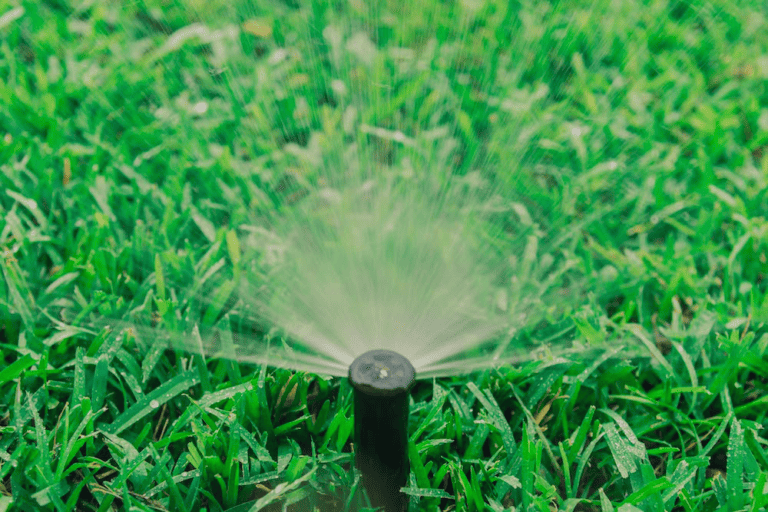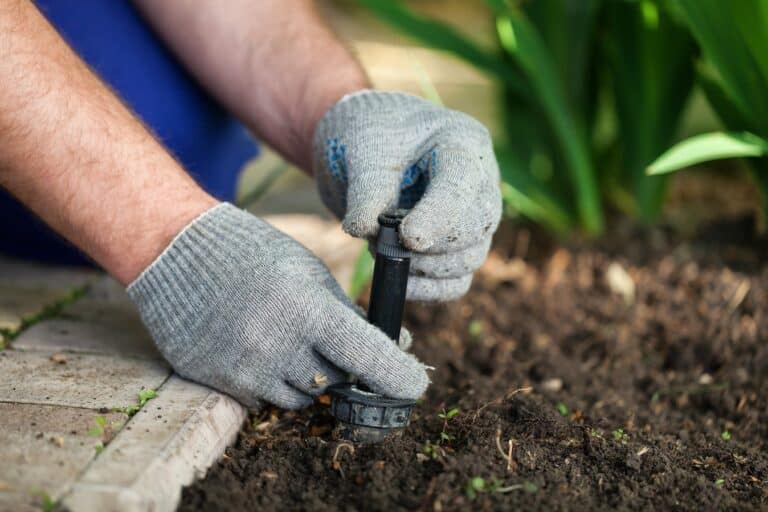What is a Master Solenoid Valve?
A master Solenoid valve is an electronic, automatic shut-off valve controlled by the reticulation controller. It is usually installed where the reticulation system connects to the mains water supply. The reticulation controller can turn the water on or off using the master valve.
A master solenoid valve works as a back-up or fail-safe valve. When your reticulation controller signals a solenoid to open to run a station – your sprinklers, it opens the master valve as well. The master valve will shut off the water to your retic system when no valves are working.
What are the main benefits of the Master valves? Well, the first benefit is that your pipe system is not under constant pressure from the mains water system. It will also help prevent slow leakages and major damages like burst pipes because it is reducing the water pressure in the piping system. It will minimise water loss if an issue arises from the other valves
How is a solenoid valve wired to a reticulation controller? Watch this youtube video for more information on how to wire a solenoid valve:
How to Wire a Solenoid Valve to an Irrigation Controller
Video courtesy of Holman Industries “How to wire a Solenoid Valve to an Irrigation Controller”, 3rd April 2020, https://www.youtube.com/watch?v=Ajft8PJG21Y&t=1s.
How to find your lost solenoid valve?
A reticulation system is made up of many parts or zones. Each zone controls a different area of the garden or lawn. These zones are in sync with a Master Solenoid Valve which gets signals from the reticulation controller to let water through. Sooner or later though, these valves get worn down. This is a common retic repair or replacement for your Irrigation system.
Thing is, it can sometimes be hard to find the solenoid valves! There are factors like size of yard, design of reticulation system and how these have been placed. So where are these typically found?
- Above ground is the best and easiest way to find the valves , situated near the mains water system or close by the water source. Sometimes, they can be hiding behind bushes or shrubs. These will have grown over the years and will eventually hide the valves from view. Older houses may not have valve boxes.
- Inside valve boxes is another way to find your solenoid valves. In newer reticulation system installations, the valve boxe(s) should be clearly visible on top of the ground. These can have green or black covers and will have the valves securely inside for irrigation maintenance, service or repair. But after a while, they can get covered with dirt and debris, thus hiding the box.
- When buried underground is where it can get tricky. Homeowners sometimes dig through the ground to find their solenoid valves. Large yards cause the most problems as you don’t know where to start and you might have several valve boxes spread over a big area. A few ways to find them:
- Maybe your sprinkler installer has given you a diagram of where the valve is located at the hand-over.
- Use your senses: the valve emits a small sound when it is working, turn on the zone from the retic controller and listen to the water flow if there is little noise around.
- Probing is a cheap way to find your lost valve box/solenoid valves. Use a screwdriver and poke around: find where the controller wires enters the ground and follow from there. You can get a rough estimate of where your valve box could be. Only downside of this method is that this may end up damaging pipes, solenoid valves and wires if they are not protected by a valve box which means expensive repairs.
- Dig around the yard starting from the reticulation controller every few meters to find the piping system. Just like the method above, you may end up with more damages and expensive repair costs.
- The best method is by using the proper tool for the job: A solenoid valve/ chatter locator. Locate the valve by the clicking sound it emits when the locator goes over it. Just like a metal detector! Simple, no damage caused and find what you are looking for quickly.
If you have tried most of the above – poking, probing, digging and still can’t find your valve box or solenoids valve, call the experts in the field! Beyond Reticulation can help you find your lost solenoids valves quickly as we have the resources at hand and can make repairs on the spot. No damages to pipes, valves or wiring.
Can I repair a Master Solenoid Valve?
Basically, a solenoid valve cannot be repaired but it can be checked and cleaned to see whether it is actually faulty. If a zone doesn’t stop running or is stuck, in most cases this is probably caused by a faulty valve. This will not be caused by the reticulation controller. Zones or stations not popping up well can be an issue with the valve.
What can cause a faulty solenoid valve? Little things like a grain of sand or dirt or debris stuck in the valve, can cause it to be defective and hence not working properly. Incorrect wiring can be the cause of the problem as well.
How to check that the valve is working?
- Unscrew the solenoid from the valve in an anticlockwise direction. Be careful not to let the spring loaded plunger inside fall in the dirt or mud. Sometimes it may be loose and pop out.
- To test that it’s working, push the end of the solenoid where the spring-loaded plunger is located. The plunger should spring back gently when released.
- Keep pressing it a few times in a row, the plunger should slide in and out easily.
- If the plunger seems to be stuck then replace the solenoid valve as it is damaged and can’t be repaired. Applying lubricant or oil will not fix the problem, replacement is recommended.
How to clean the valve?
This part can be a little bit tricky and best left to the experts to get right. But in a nutshell:
- The valve has to be disassembled to check that the ports are not blocked by debris, sand or twigs inside the valve lid.
- Check the valve seat for anything stuck inside and remove them carefully. Try not to scratch or break any parts as you will then have to get the valve replaced.
- Then flush the valve thoroughly to remove any particles that may still be inside before reassembling the parts.
Like I said, it is tricky and so easy to lose a part or scratch and break the ports or the body. It is best to call on our technicians to get this sorted out for you. Call us now and get any sprinkler issues fixed. We will test the system and make sure that your reticulation system is working at its best. We will even fill out a leak allowance form for you to send to the Water Corporation. We are here to help. Call us now!












